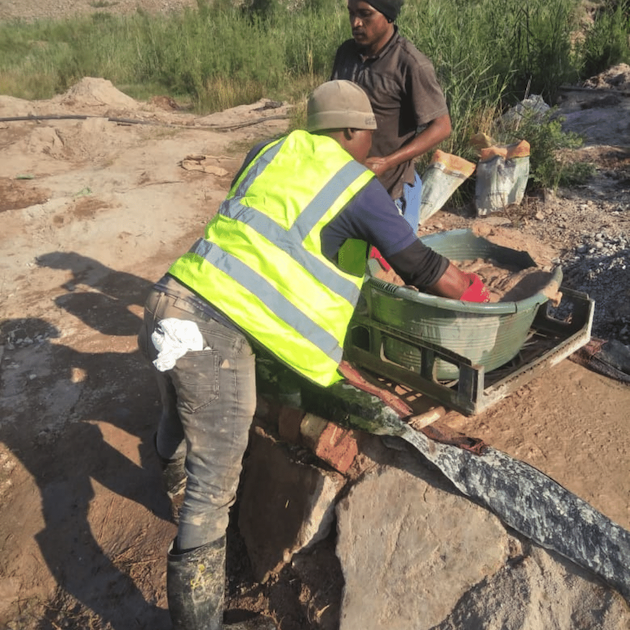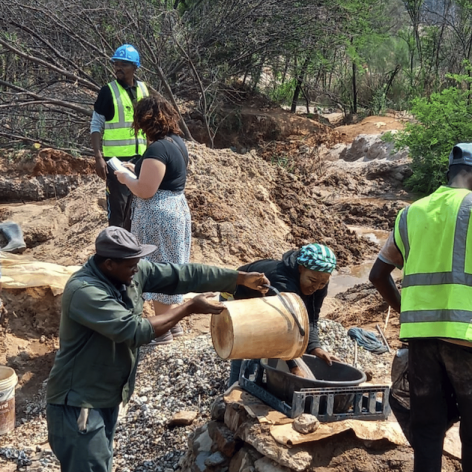Artisanal Miners Face Onerous Obstacles to Become Legal — Global Issues
JOHANNESBURG, Mar 24 (IPS) – Greed, poverty, irresponsible legal mining giants which exploited and then abandoned South Africa’s mines, together with the government’s failure to enforce regulations on the mining giants to rehabilitate mines before closing them, have created fertile ground for a thriving illegal artisanal mining sector called Zama Zama, many of them run by criminal syndicates.
South Africa’s economy has largely been mining based, and under apartheid, white-owned mining companies exploiting lucrative gold, diamond, coal, and chrome grew rich, using cheap local and migrant labour from neighbouring countries.
Post-apartheid, the ANC government has tried to bring black ownership and small-scale miners into the mining sector and, more recently, attempted to decriminalise artisanal miners who use rudimentary tools and are largely involved in surface mining.
According to submissions made by the Legal Resources Centre (LRC), the Benchmarks Foundation, and the International Labour Research and Information Group (ILRIG), policy weaknesses, lack of enforcement, bureaucratic bungling, and red tape have ensured that the status quo from apartheid remains largely intact.
The LRC contends that retrenchments due to mechanisation or closure of unprofitable mines have increased illegal mining. The lack of enforcement of laws relating to the rehabilitation of closed mines has created space for criminal Zama Zama and artisanal miners who are perforce illegal to operate in disused or abandoned mines.

With the publishing of the Policy on Artisanal and Small-Scale Mining in March 2022, artisanal miners all over the country are forming cooperatives in a bid to be legalised. But it is an uphill battle to get permits.
The LRC also warns of further conflict and xenophobia because the law precludes foreign Zama Zama from getting permits. However, Minister of Mineral Resources and Energy Gwede Mantashe says: “It must be clear that once an individual illegally enters our country and engages in illegal economic activity, such an individual cannot be sanitised through being issued with a small-scale mining license.”
Robert Krause, an environmental researcher, says that the roots of the problem lie in “the mining houses shirking their environmental rehabilitation responsibilities as well as failure to invest in a post-mining economy for workers and the surrounding community.”
There are nearly 6000 ownerless and derelict mines, many of them “abandoned by mining capital before the present regulatory dispensation under the National Environmental Management Act and the Financial Provisioning regulations.”
Krause says there is “a persisting pattern of large mining houses selling off their mines towards closure to companies they know full well will not be in a position to carry out their rehabilitation duties.”
Legal loopholes and lax regulation by the regulator enable this.
“The companies that end up with liabilities frequently go insolvent, and the financial provision for closure is often treated as just another claim.”
He says, “Mine abandonment fuels illegal or artisanal operations, as low-grade ore is left behind, convenient entrances remain open, and people in need of work are thrown out of the economy.”
When the profitable reserves are depleted, there’s an employment crisis. Then, the option for survival, mainly where closure is not done properly, is to become a Zama Zama.
Krause says the artisanal miners need material support and capacitation from mining companies and the state, “instead they are still often treated like criminals while violent criminal syndicates flourish.”
According to an Oxpeckers environment journalism probe a few years ago, “a fortune has been set aside for mine rehabilitation in South Africa. But large mines are not being properly closed, and the money cannot be touched.”
Oxpeckers say that although the money cannot be used for rehabilitation while a mine is still operational, the DMRE can use it if it is abandoned.
“The department is yet to provide an instance in which this money has been used, however. Instead, most mines are not deemed legally closed, and the money cannot be touched.”
But Mantashe says: “It is estimated that it would cost over R49 billion to rehabilitate these mines. The Department of Mineral Resources and Energy (DMRE) receives R140 million per annum for the rehabilitation of mines. With this allocation, we can only rehabilitate at least three mines and seal off 40 shafts per year.”
The minister revealed in September 2022 that 135 shafts in the Eastern, Central, and Western Basins in Gauteng (province) were sealed over three years. The DMRE intended to seal off another 20 in the current financial year, prioritising the Krugersdorp area where Zama Zama gang raped a film crew in July last year.
Mantashe says that the rehabilitation of mines is a long terms project: “We must appreciate that it would take a long time to completely rehabilitate all these mines at this rate due to budget constraints and security threats to officials executing this programme.”
Advocates for the legalisation of artisanal miners say the government needs to provide resources to fund environmental assessments and facilitate a local buyers’ market via a national buying entity to sell their mined products.
“People in South Africa need to finally see the benefits of the mineral resources of South Africa, as in the past colonial and Apartheid practices coupled with large-scale mining have deprived the majority of this benefit,” the LRC group says.
Clearly, this is a pipe dream, as the struggle by artisanal miners to get permits to become legal has underlined.
The irony is that their legalisation will not only allow them to earn a living but also pay taxes and end their constant harassment by criminal elements and the police alike.
IPS UN Bureau Report
Follow @IPSNewsUNBureau
Follow IPS News UN Bureau on Instagram
© Inter Press Service (2023) — All Rights ReservedOriginal source: Inter Press Service
Check out our Latest News and Follow us at Facebook
Original Source







